Negative Numbers Worksheets
Calculations Crossing Zero (A)
Year groups: 7, 8
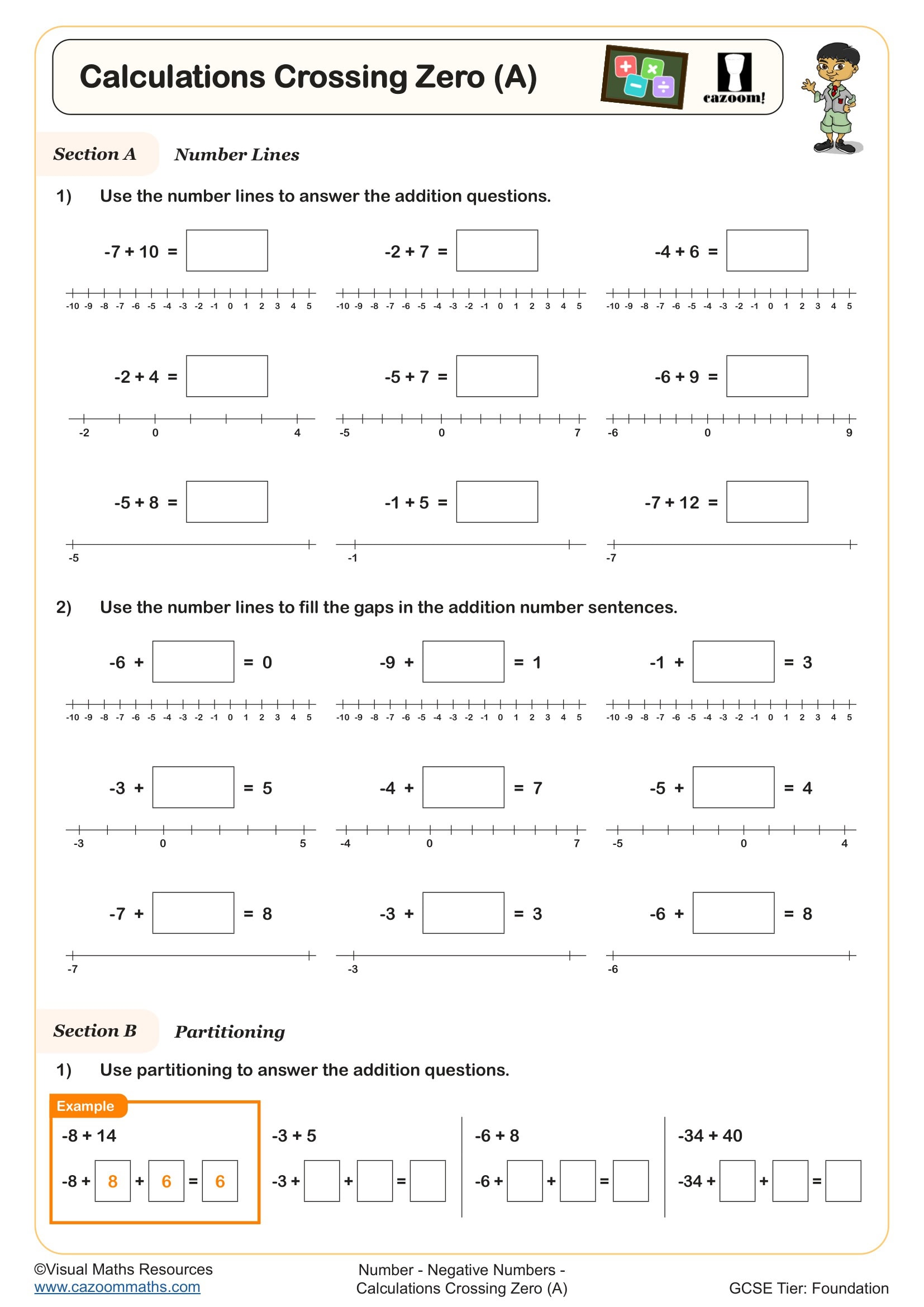
Calculations Crossing Zero (B)
Year groups: 7, 8
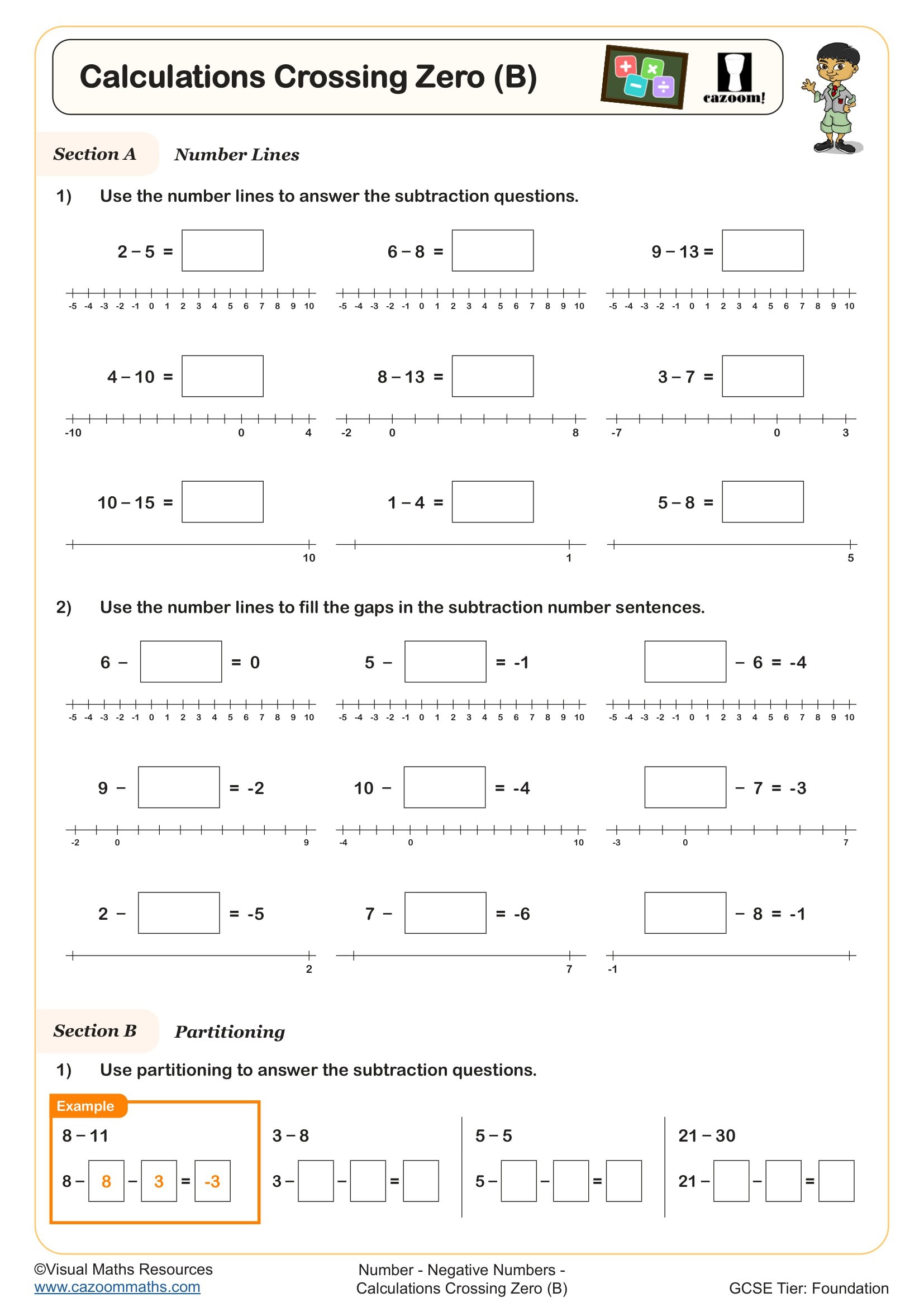
Calculations Crossing Zero (C)
Year groups: 7, 8
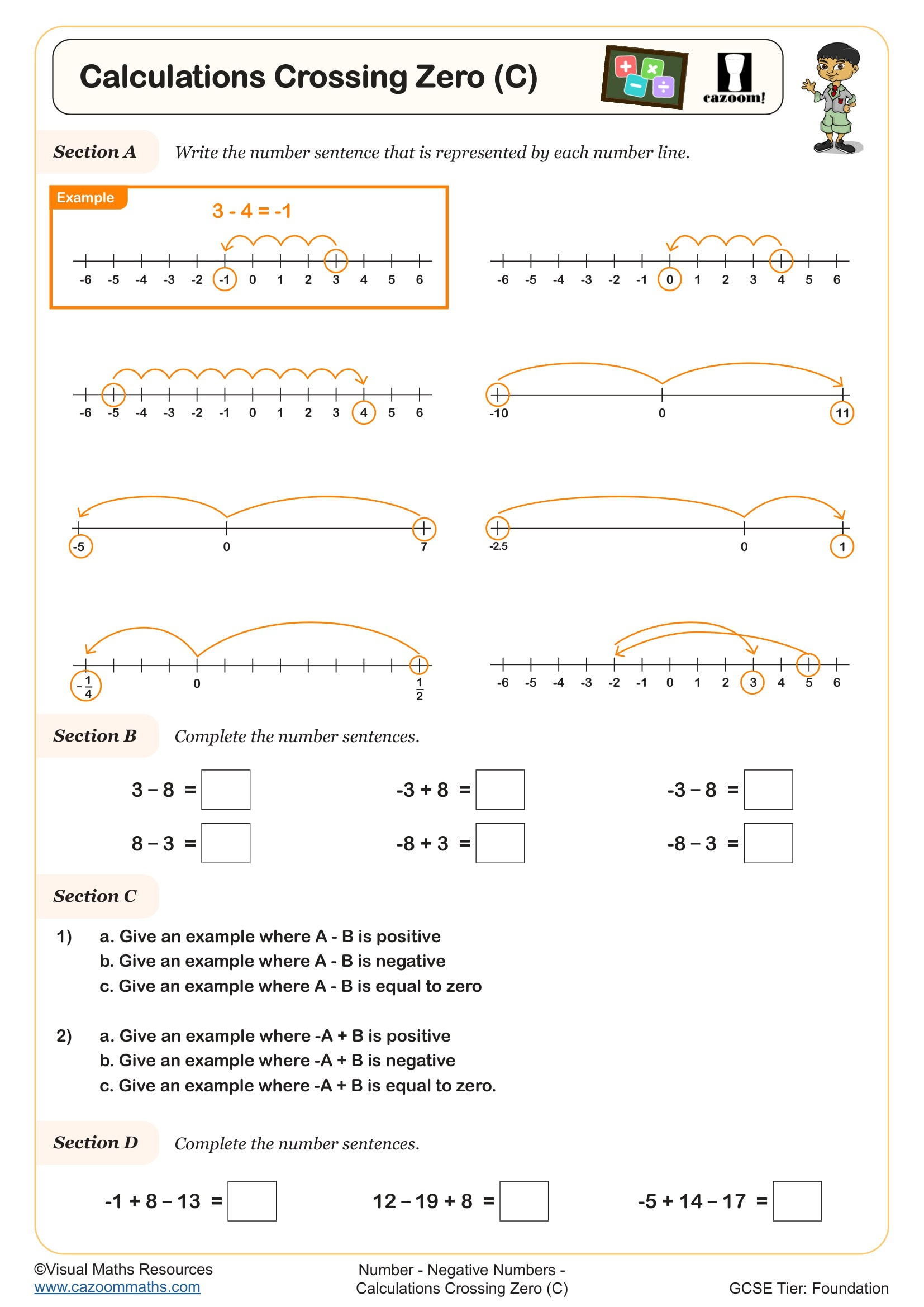
Comparing Negative Numbers
Year groups: 7
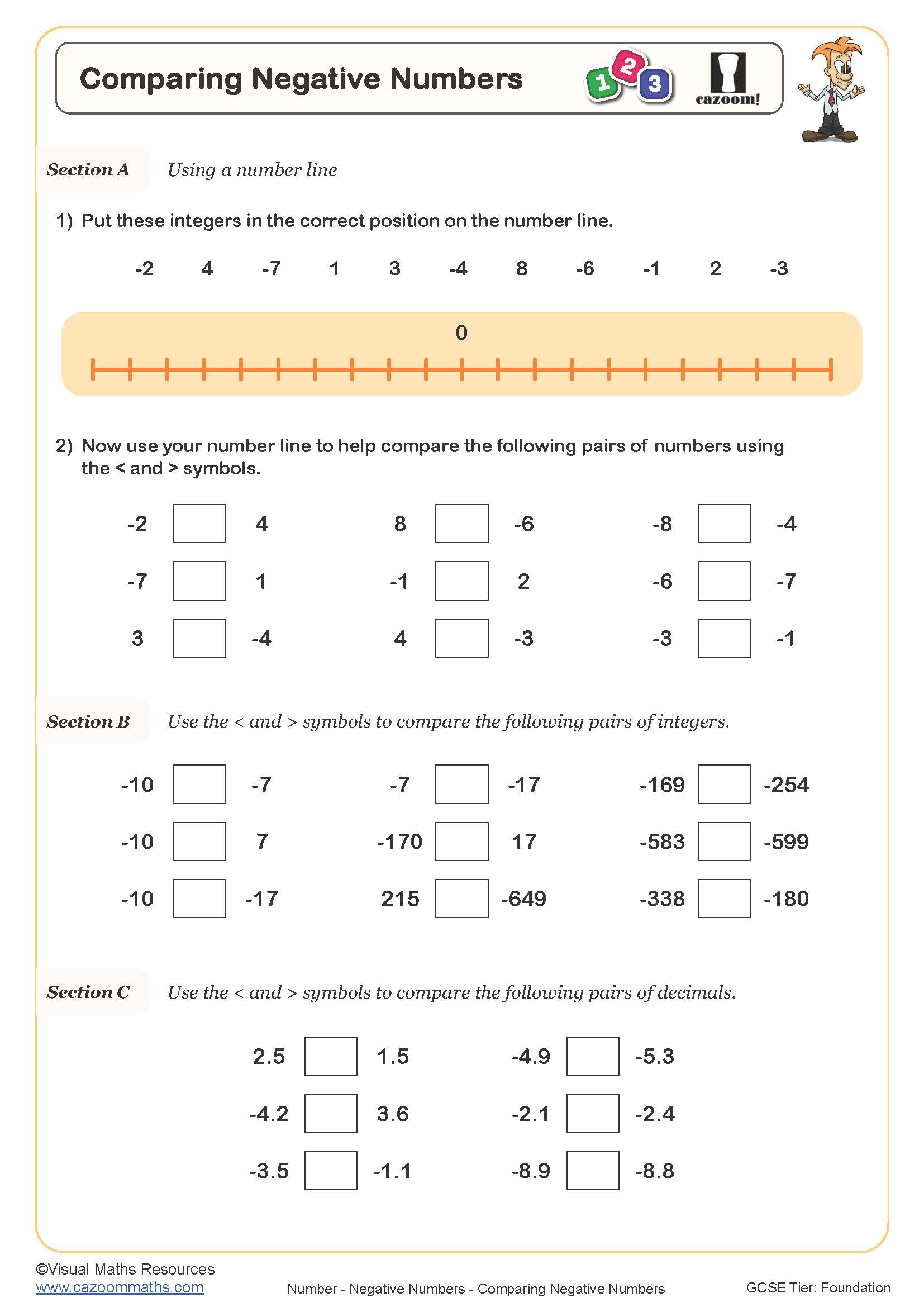
Comparing Temperatures
Year groups: 7
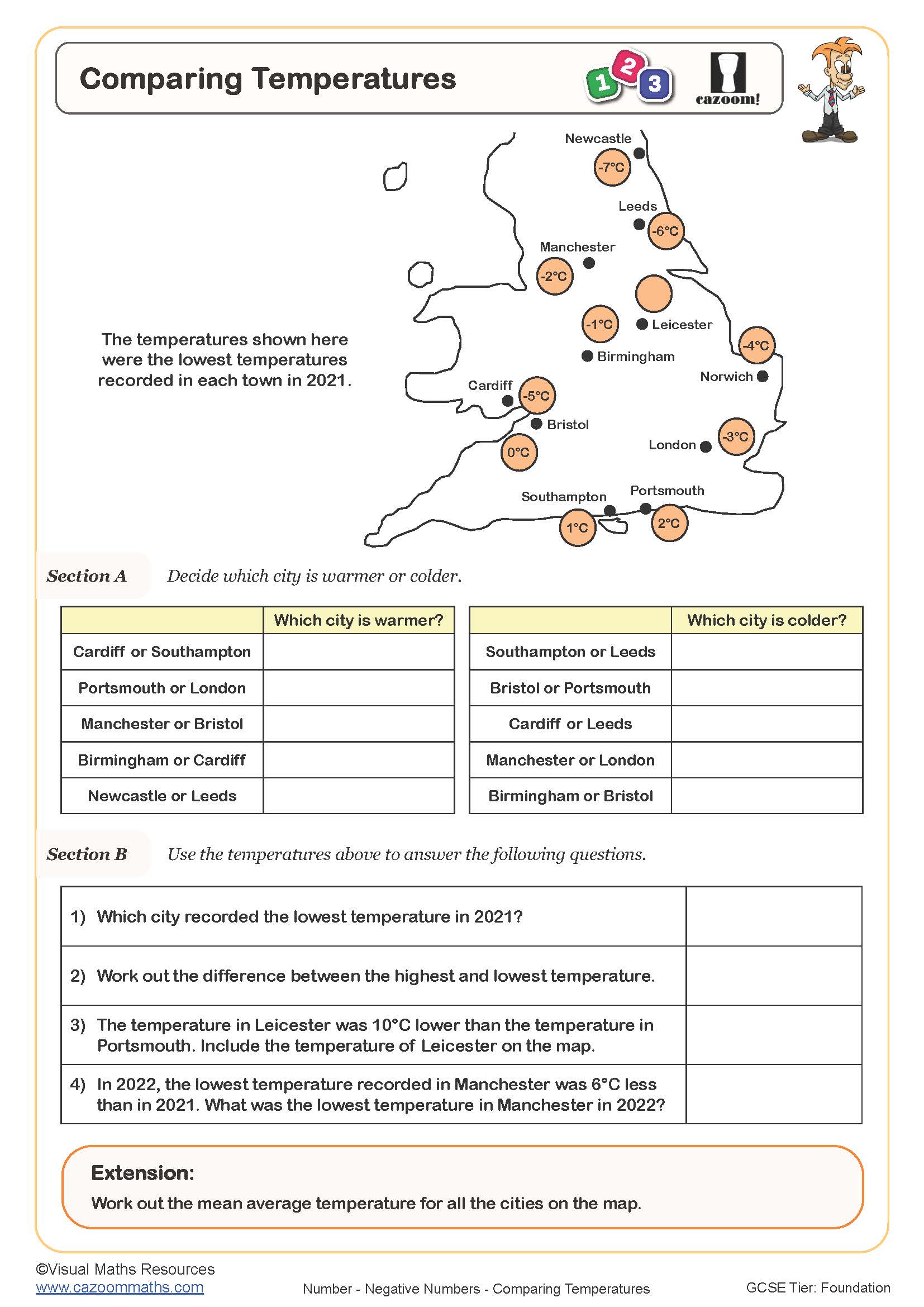
Directed Number - Addition Using Directed Counters
Year groups: 7, 8
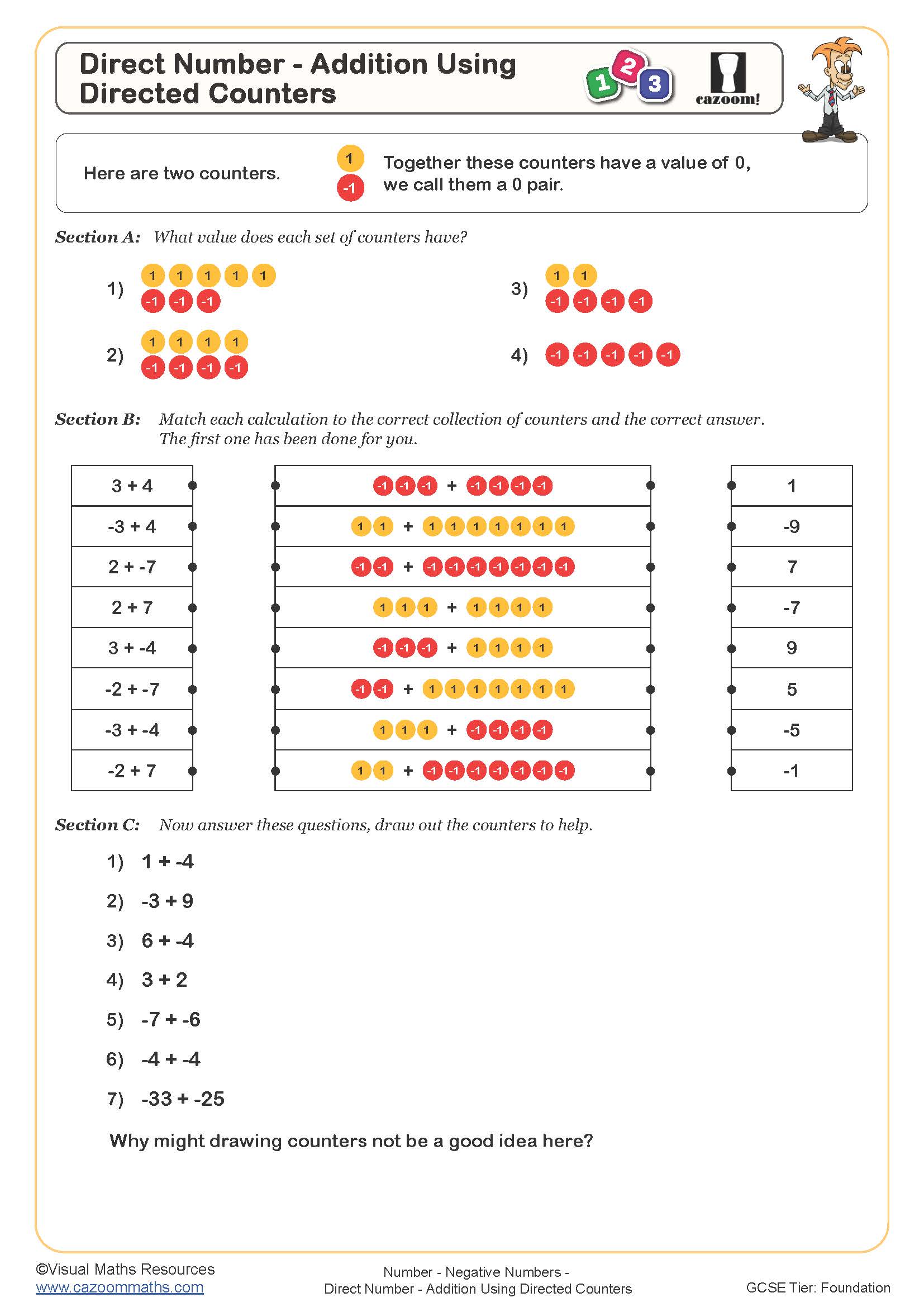
Directed Number - Multiplication Using Directed Number Counters
Year groups: 7, 8
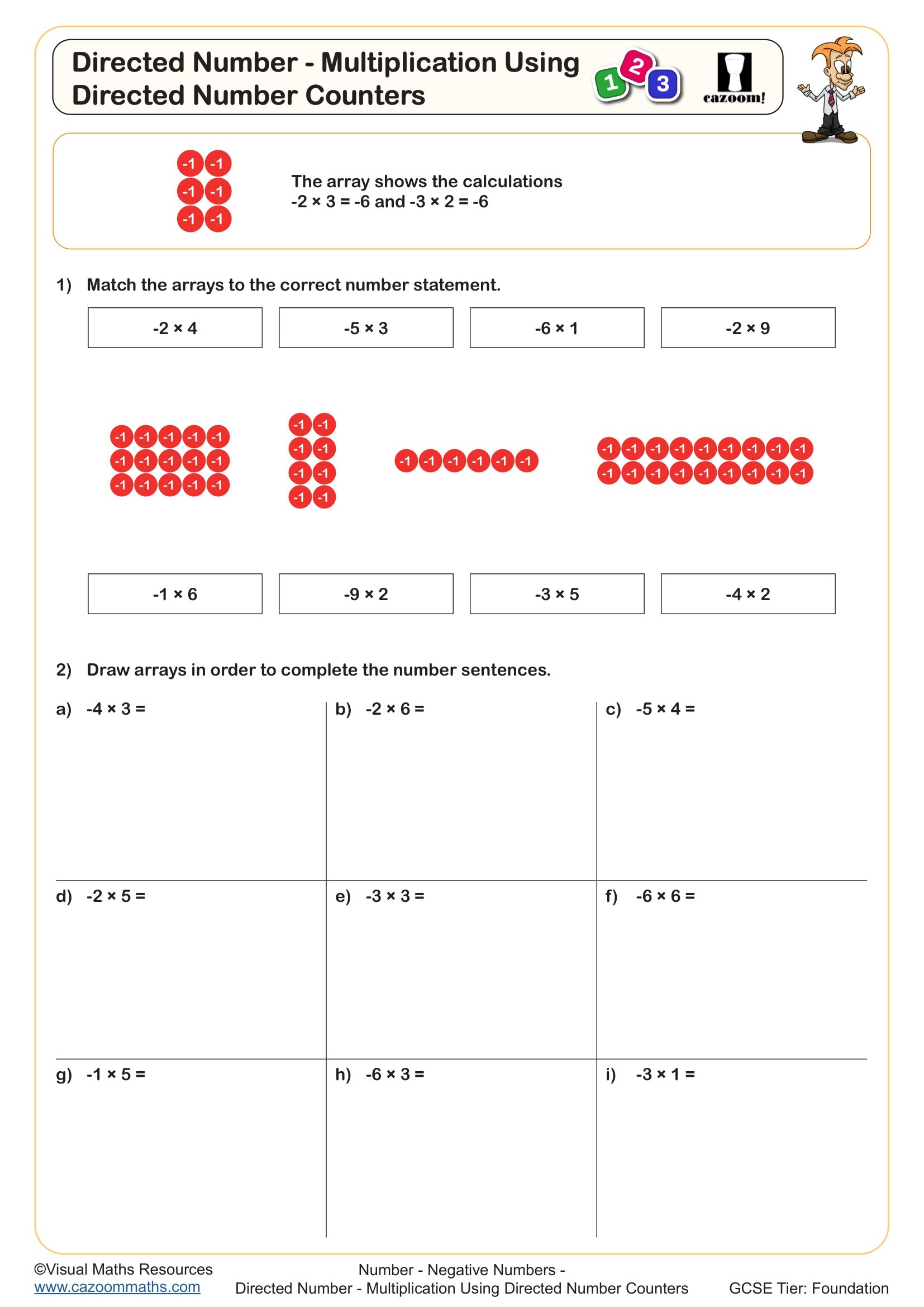
Directed Number - Subtraction Using Directed Counters
Year groups: 7, 8
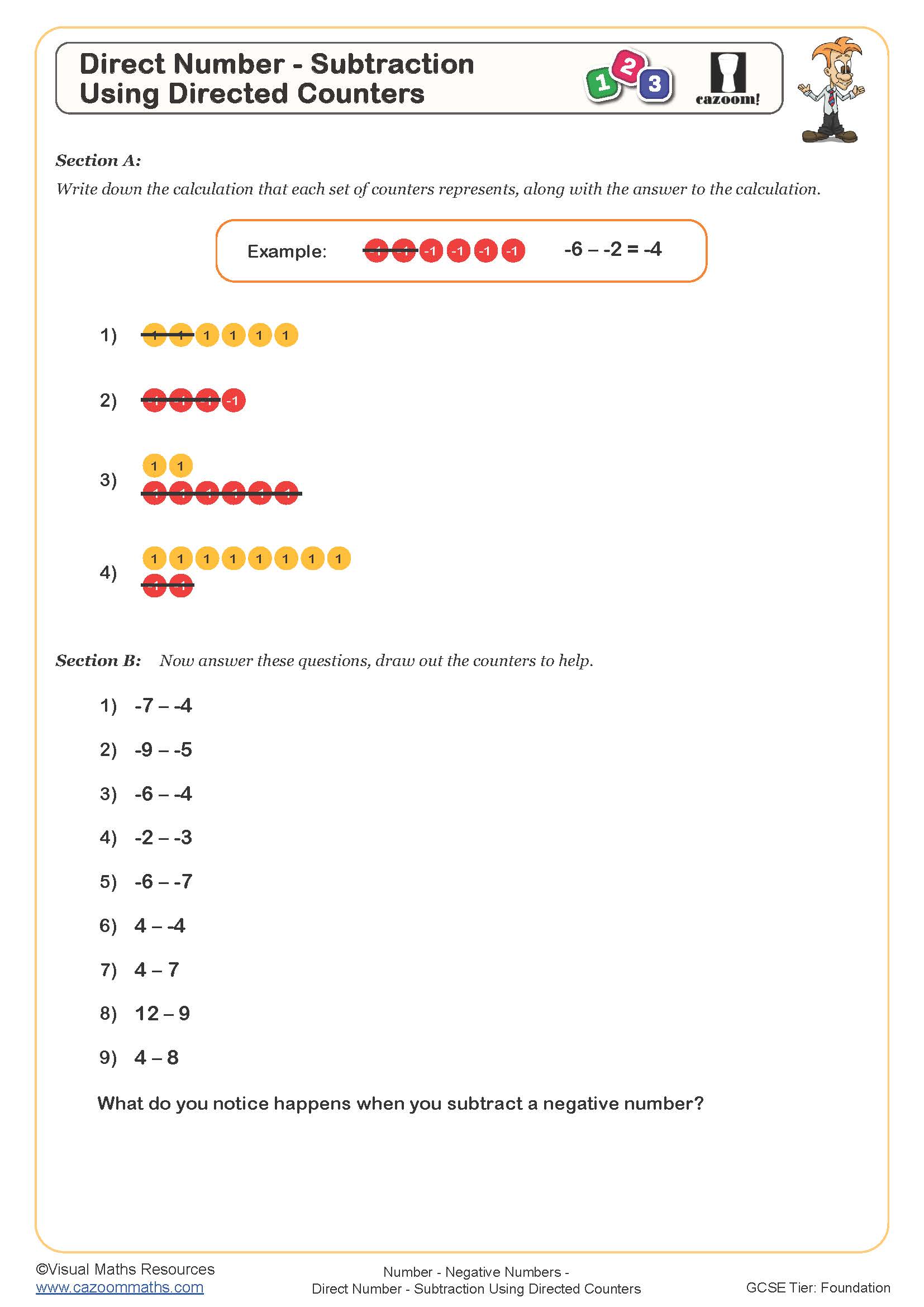
Directed Number – Addition by Pattern Spotting
Year groups: 7, 8
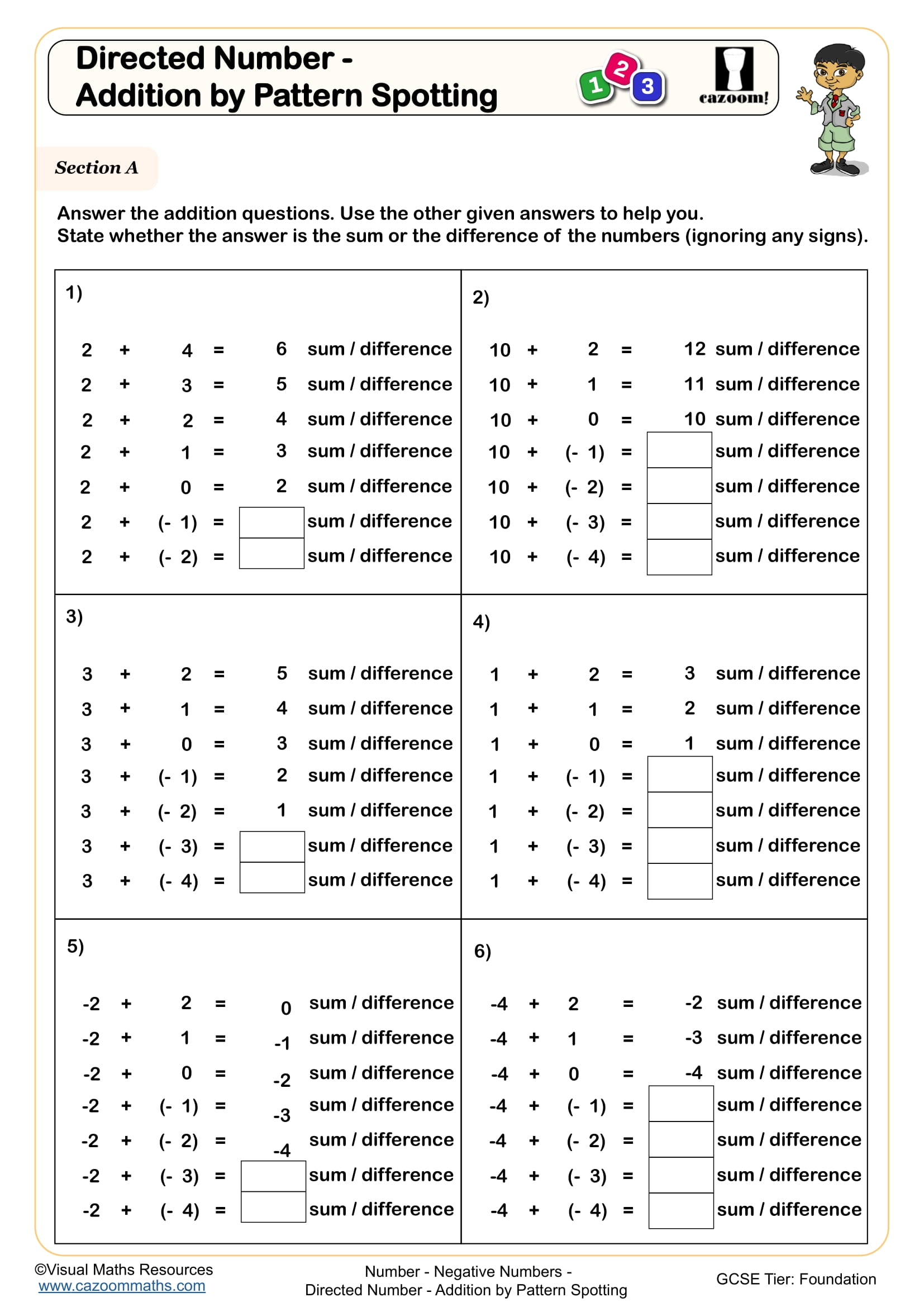
Directed Number – Subtraction by Pattern Spotting
Year groups: 7, 8
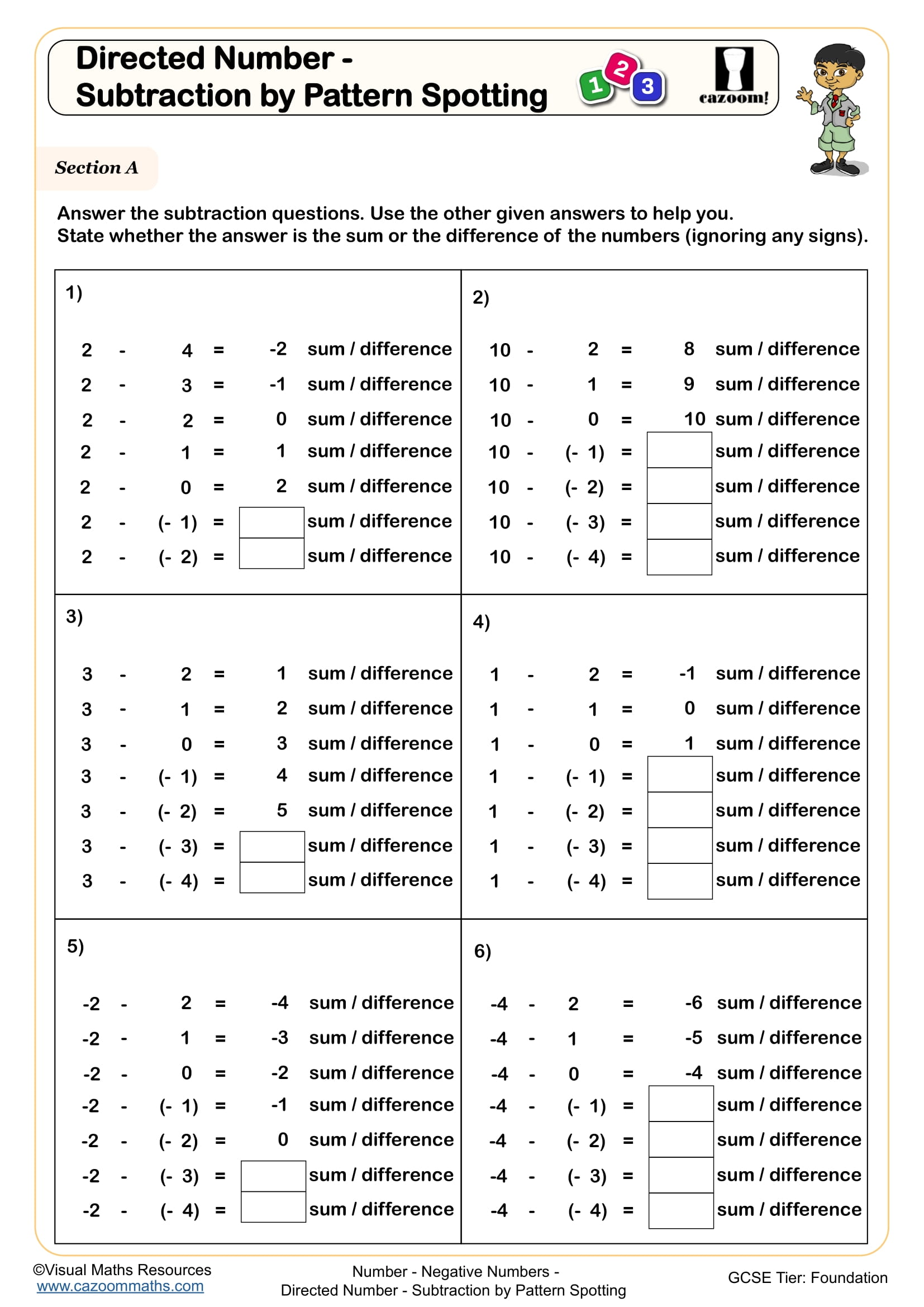
Finding the Difference - Directed Numbers
Year groups: 7, 8
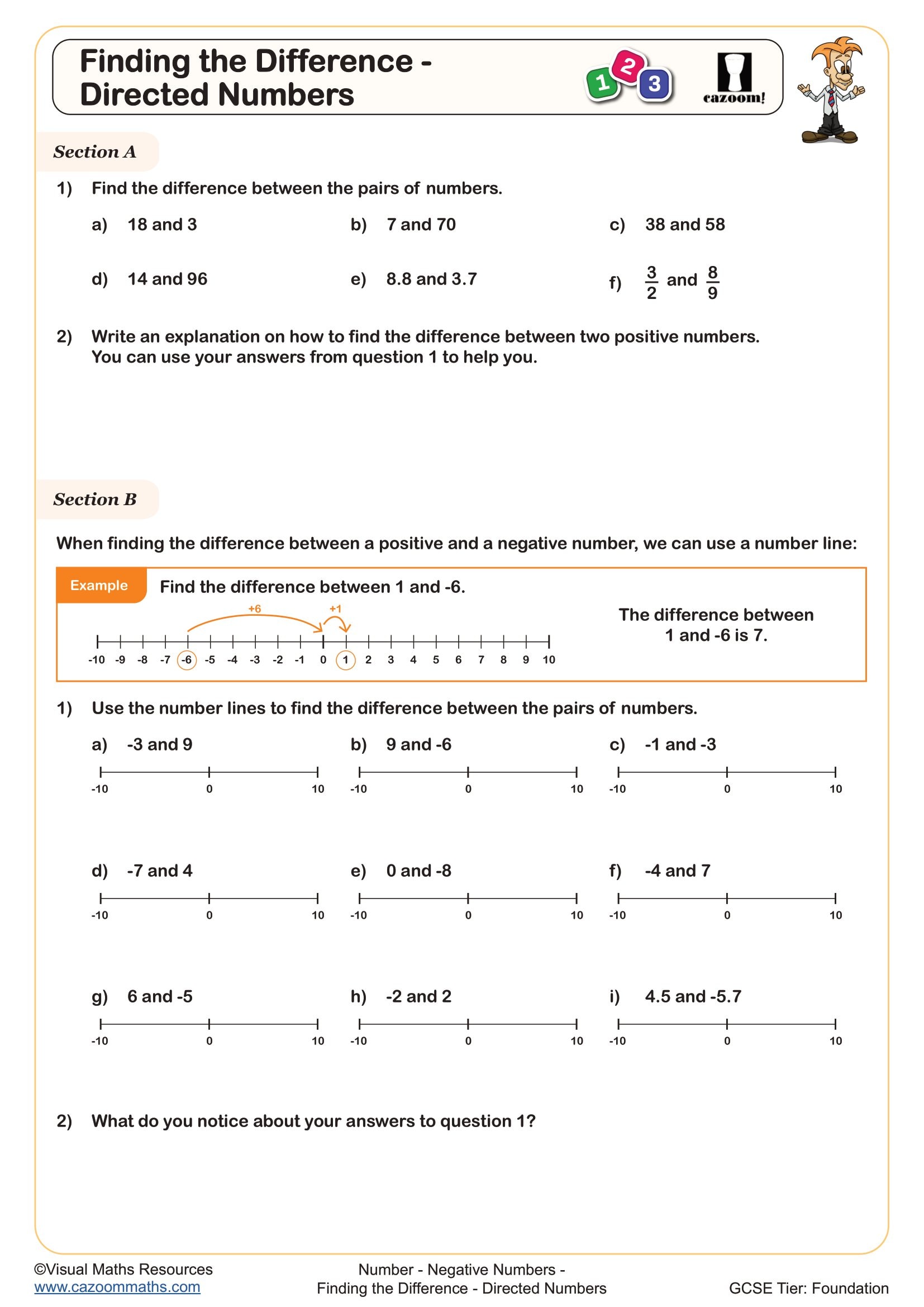
Negative Number Multiplication and Division
Year groups: 7, 8
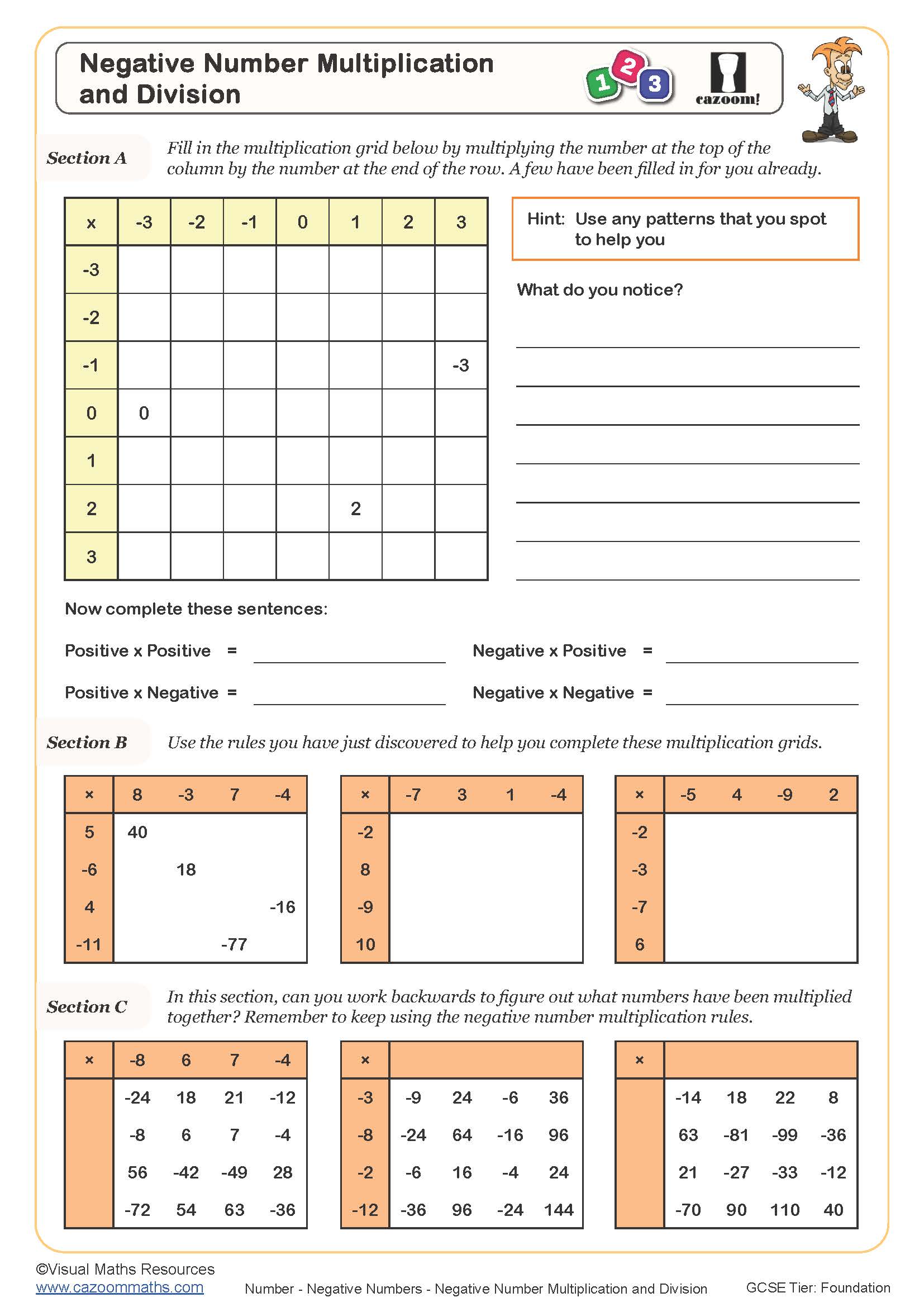
Negative number search - sums to +1
Year groups: 7, 8
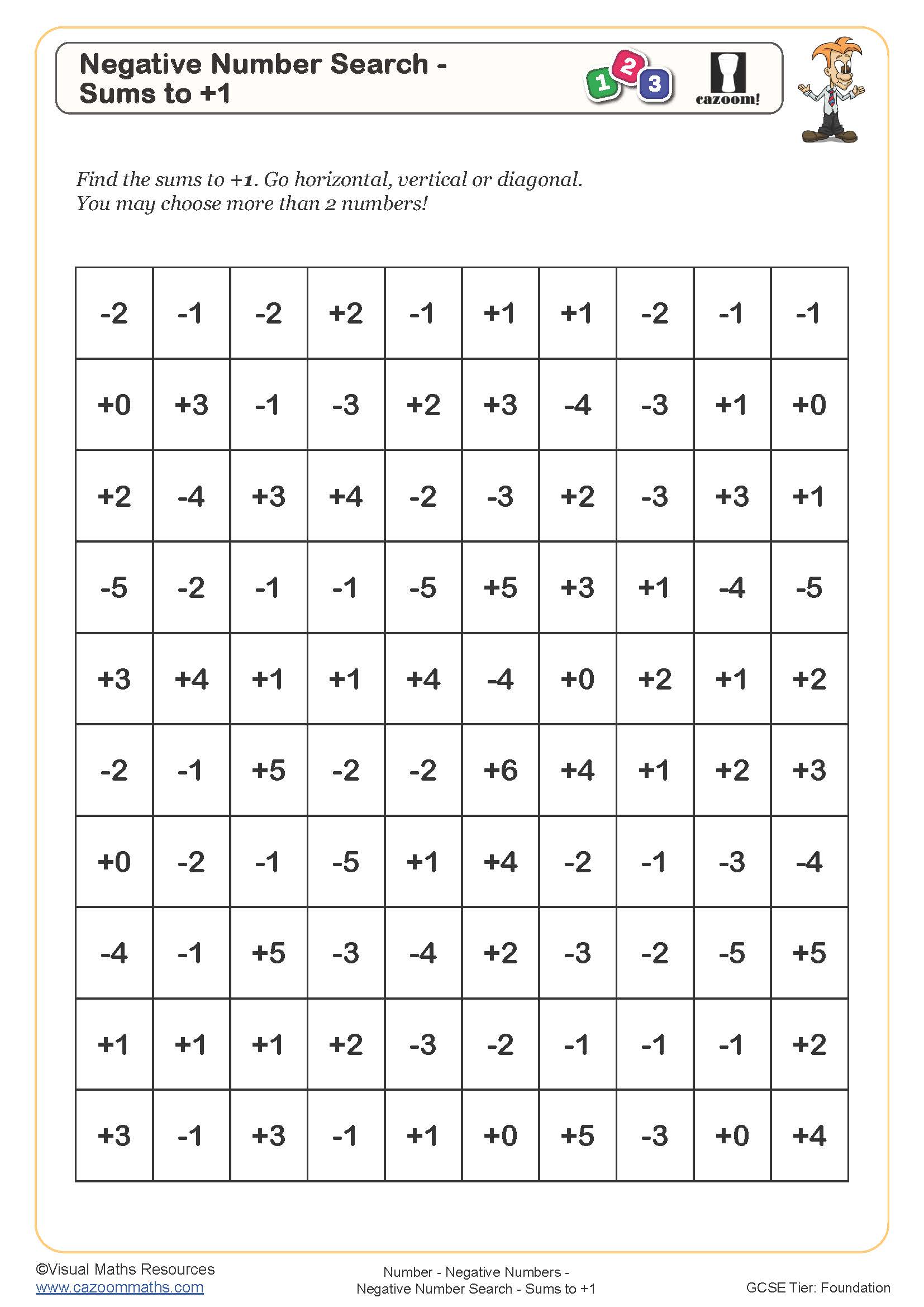
Negative Numbers - 4 Operations Puzzles
Year groups: 7, 8
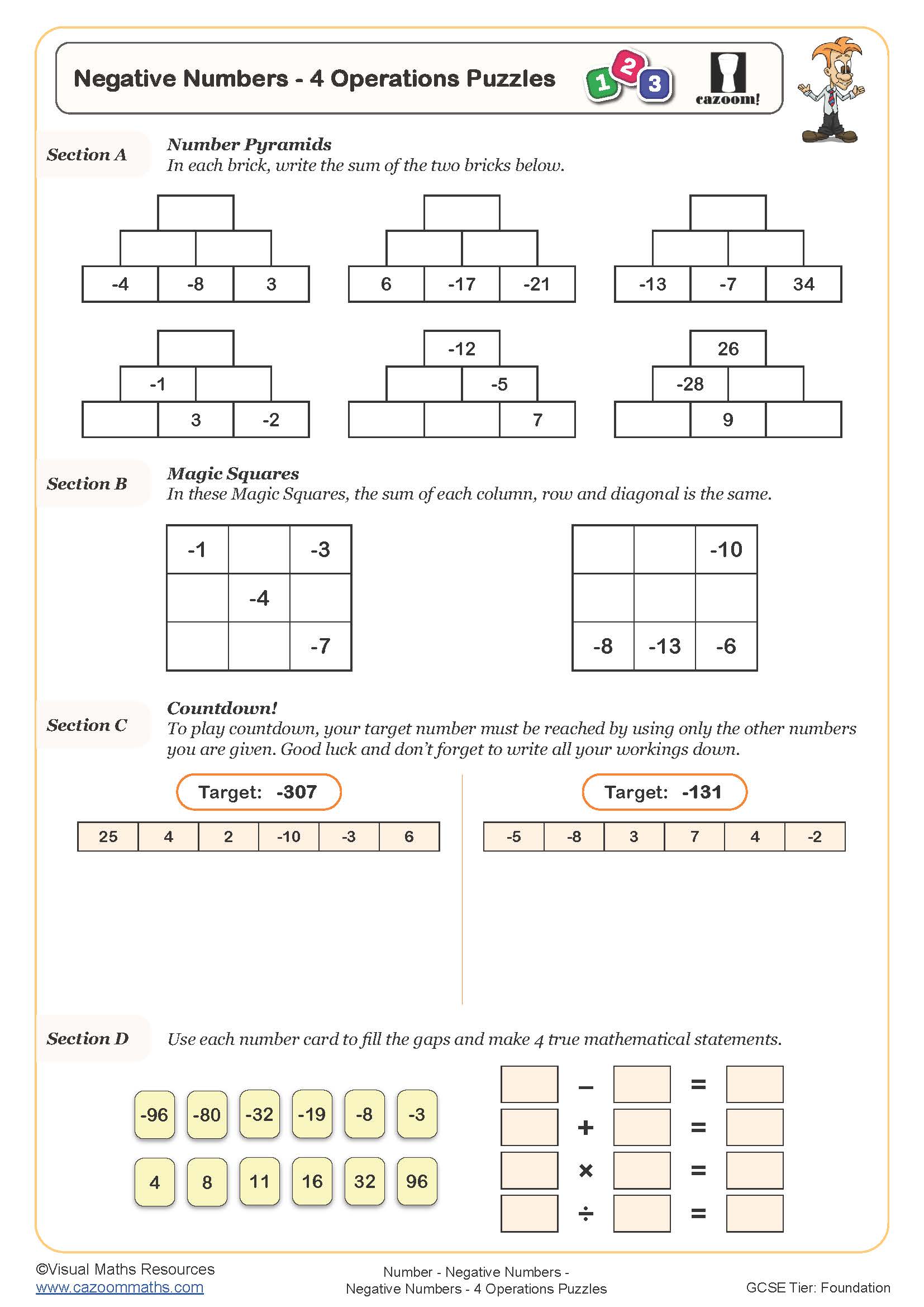
Negative Numbers 10 Minute Challenge
Year groups: 7, 8, 9
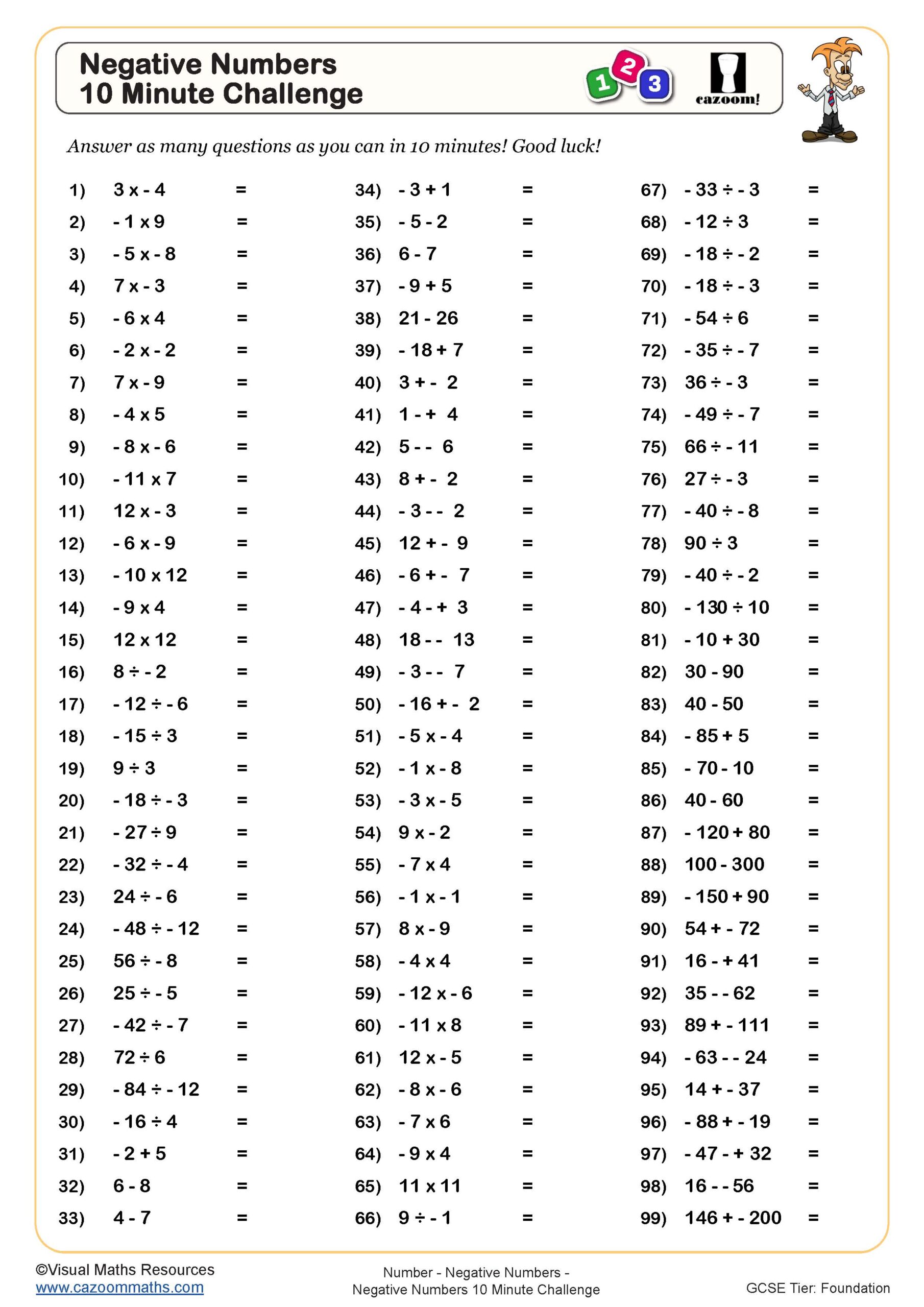
Practice Negative Number Addition and Subtraction
Year groups: 7, 8, 9
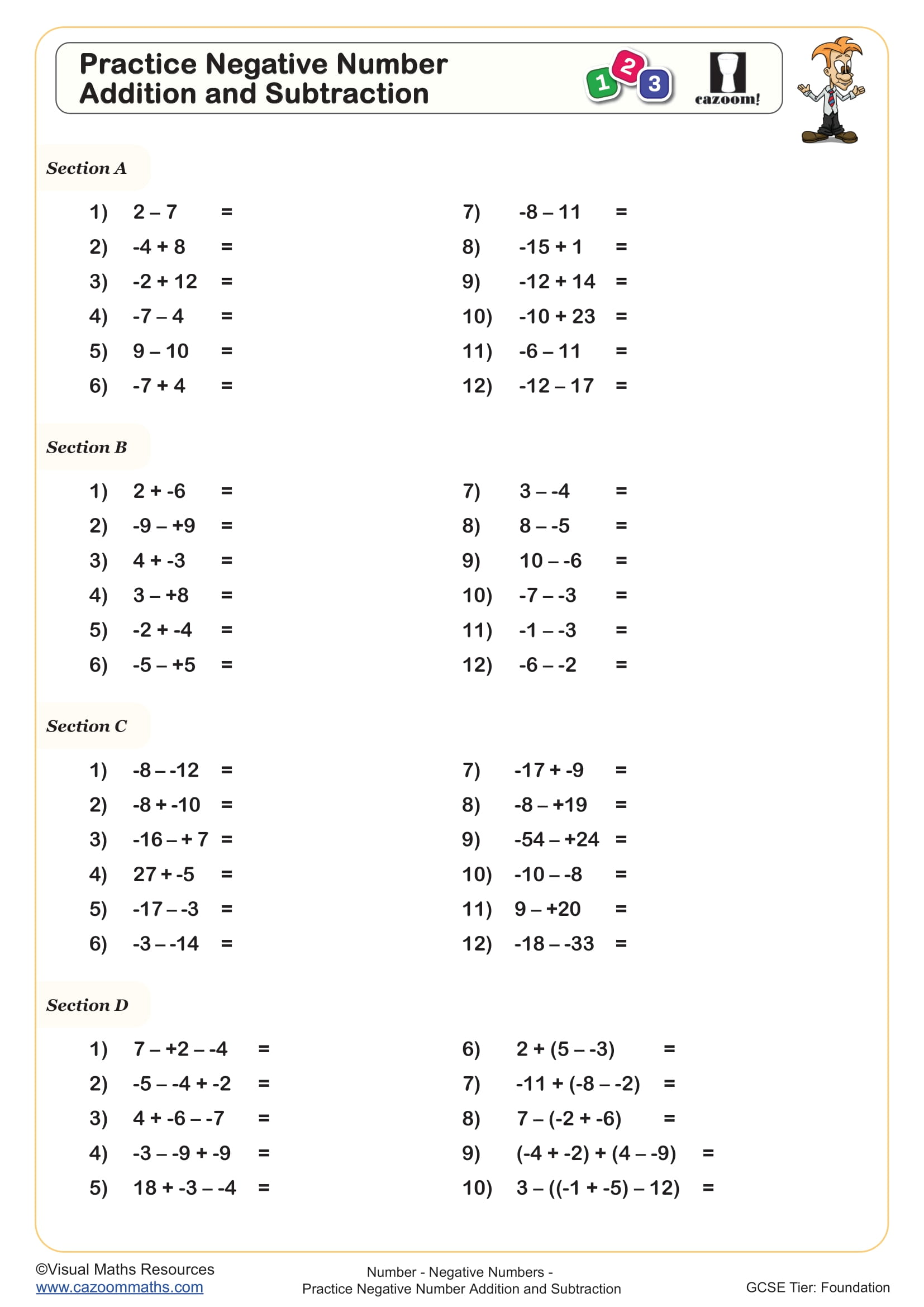
Representing Numbers - Using Directed Counters
Year groups: 7, 8
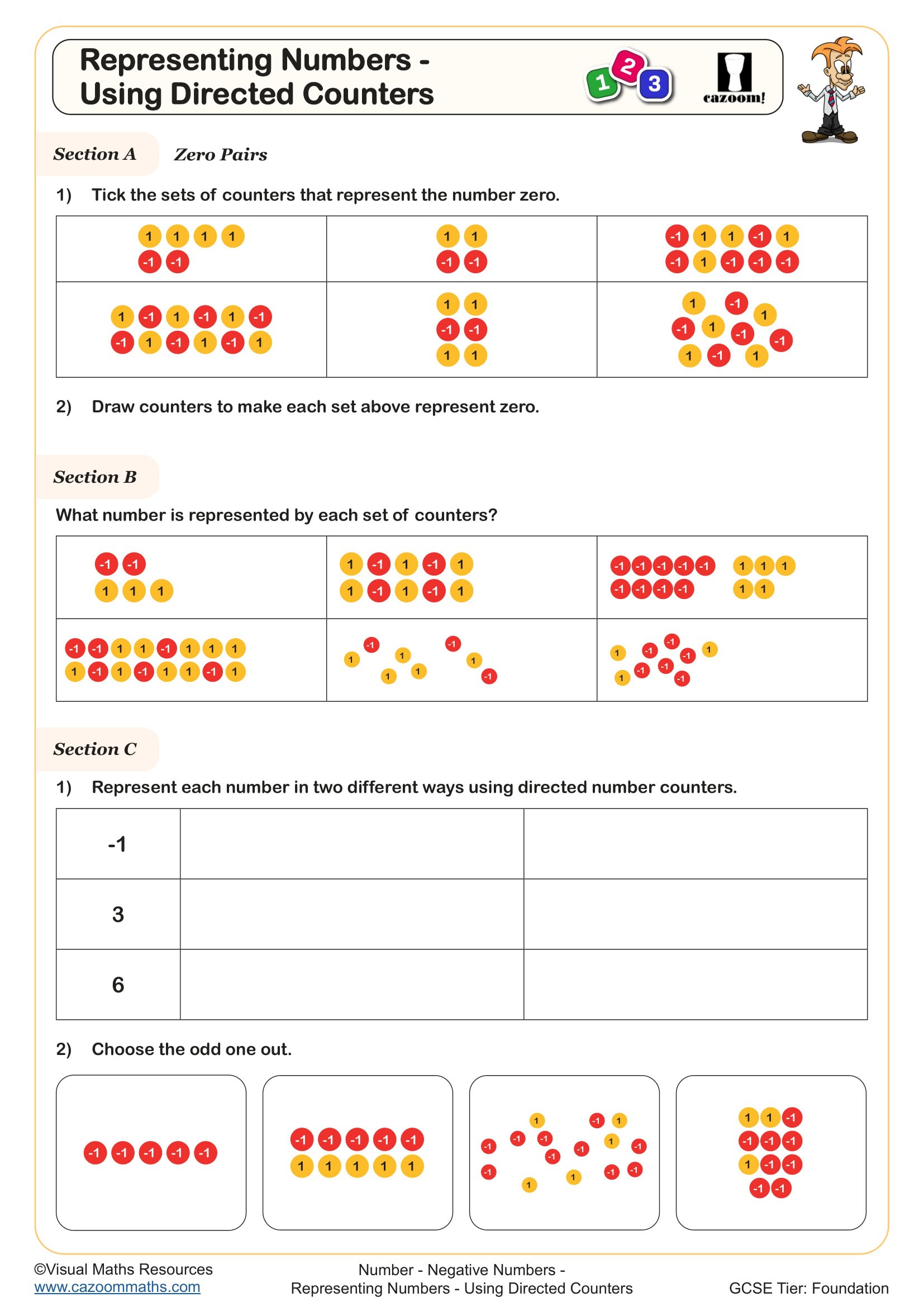
Negative Numbers Worksheets for KS2 and KS3 Students
Negative numbers often confuse children, so use our printable negative numbers worksheets to remove the anxiety around negative numbers.
Our resources are clearly presented and easy to follow and contain plenty of enjoyable activities for them to practice multiplying, adding, subtracting and dividing negative numbers. Negative numbers appear when measuring temperatures and many more real life situations, so make sure your child or pupil is well prepared by using the resources available on Cazoom Maths.
The Real Life Applications of Negative Numbers
Many students question why learning about negative numbers is important, citing the reasoning that negative numbers of objects simply cannot exist.
Their argument is that it is not possible to have -1 apple, which would be correct, however this does not mean that there are no possible uses for negative numbers in real life. Here are a few examples of when negative numbers will be useful.
Negative Numbers in Everyday Life
The temperature unit Celsius places zero at the point where water freezes.
Anything below 0C is represented by a negative number, to differentiate between temperatures above freezing point and below freezing point. When temperatures are given as negative numbers on a weather report, this tells viewers that it is likely to be icy outdoors and that they should take extra care while driving. Negative temperatures are also displayed on food packaging to advise buyers what temperature they should store frozen items.
Importance of Learning Negative Numbers
Negative numbers are frequently used on bank statements.
When the bank account holder has spent less money than they have in their account, the final balance at the end of the statement will be displayed as a positive number. However, when someone spends more money than they have, this number will be displayed as a negative number. Understanding how negative numbers work is important in order to work out how much you owe the bank, so it is important to prepare students well for this situation by using negative numbers worksheets throughout their education.